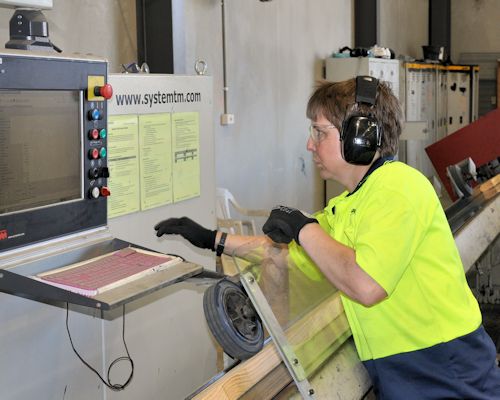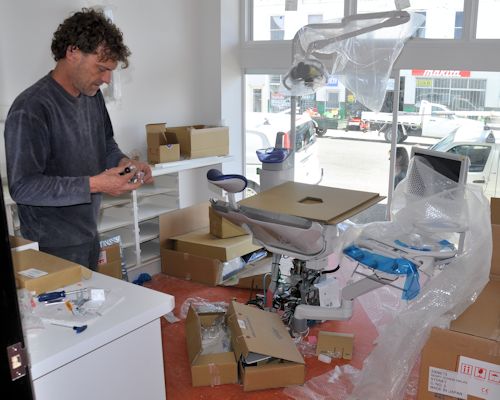Anti-static flooring
 Audio for slide 1 (mp3 |6|KB)
Audio for slide 1 (mp3 |6|KB)
If a client asks you for 'anti-static flooring', you need to find out exactly what the purpose of this 'static control' is.
If it's just to stop the problem of people getting a tiny shock when they touch something due to a static build-up, then an anti-static floor covering is the most appropriate choice.

If it's just to stop the problem of people getting a tiny shock when they touch something due to a static build-up, then an anti-static floor covering is the most appropriate choice.

 Audio for slide 2 (mp3 |6|KB)
Audio for slide 2 (mp3 |6|KB)
However, if they're using or handling components that could be damaged by electrostatic discharges, you need to ask more questions and find out what level of protection is required.
The manufacturers of the equipment being used in the room are likely to specify the type of flooring required.
In the case of new buildings or facilities, there are sure to be engineering specifications for any ESD-sensitive areas.

The manufacturers of the equipment being used in the room are likely to specify the type of flooring required.
In the case of new buildings or facilities, there are sure to be engineering specifications for any ESD-sensitive areas.

 Audio for slide 3 (mp3 |6|KB)
Audio for slide 3 (mp3 |6|KB)
The techniques used to install anti-static flooring are the same as for any other tile or sheet installation.
However, the composition of the product may be somewhat different, so you should strictly follow the manufacturer's instructions on the correct adhesive and underlayment to use.
The manufacturer may also provide advice on the most appropriate trims and other fittings for this type of floor.

However, the composition of the product may be somewhat different, so you should strictly follow the manufacturer's instructions on the correct adhesive and underlayment to use.
The manufacturer may also provide advice on the most appropriate trims and other fittings for this type of floor.

 Audio for slide 4 (mp3 |6|KB)
Audio for slide 4 (mp3 |6|KB)
Static dissipative floors
If it turns out that the client needs a static dissipative floor, you can still use the same general installation techniques. However, the following differences will apply:
- the flooring material selected must have a surface resistance specification that puts it in the static dissipative category
- the adhesive must also have a low resistance specification and strictly comply with the manufacturer's requirements
- the levelling compound and subfloor may have to meet certain specifications to ensure that they won't affect the floor's ability to dissipate static charges
- under some circumstances, the floor may need to be earthed by a licensed electrician.


Learning activity
Audio 5 (mp3 |6|KB) Go to Conductive flooring

Industry Network Training and Assessment Resourses
© 2023 Workspace Training



